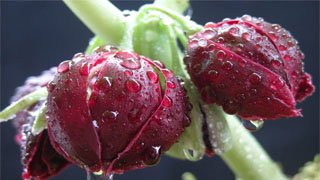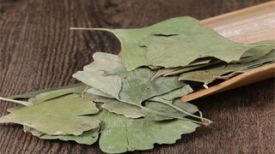
1. Aliases
Octagonal Lian, Golden Kui Lian, Dry Octagonal, Under Leaf Flower, Umbrella, Horse Eyed Lotus, One Leaf One Branch Flower, Octagonal Plate, Hexagonal Lotus, One Foot Lotus, One Horn Lotus, Eight Horn Golden Plate, Mountain Lotus Leaf.2. Plant morphology
Octagonal lotus: a perennial herb with a plant height of 40-150 centimeters. Rhizome thick, transverse, with many fibrous roots; Stem upright, unbranched, hairless, light green. 2 stem leaves, thin papery, alternate, shield shaped, nearly circular, with a diameter of 30 centimeters. They are 4-9 palmately lobed, with wide triangular lobes, ovate or ovate elongated, 2.5-4 centimeters long, 5-7 centimeters wide at the base. The apex is acute, not divided, without hair on the top, and the back is pubescent. The leaf veins are clearly raised, and the edges have fine teeth; The stalk of the lower leaf is 12-25 centimeters long, and the upper leaf stalk is 1-3 centimeters long. Pedicels slender, downward curved, and covered with soft hairs; The flowers are deep red, with 5-8 clusters growing not far from the base of the leaves, drooping; Sepals 6, oblong elliptical, 0.6-1.8 cm long, 6-8 mm wide, apex acute, covered with short pubescence on the outside, and hairless on the inside; Petals 6, spoon shaped obovate, approximately 2.5 centimeters long and 8 millimeters wide, hairless; Stamens 6, approximately 1.8 cm long, filaments shorter than anthers, anther septum apex acute, hairless; Ovary elliptical, hairless, style short, stigma shield shaped. The berry is oval shaped, about 4 centimeters long, and has a diameter of about 3.5 centimeters. Most seeds. The flowering period is from March to June, and the fruiting period is from May to September. The difference between hexagonal lotus and octagonal lotus is that the leaves are usually 2 pieces, opposite, with long or nearly circular leaves, 6-9 shallow cracks, and wide triangular ovate lobes. Peanuts grow at the intersection of two stems and petioles. The difference between Sichuan octagonal lotus and octagonal lotus is that the stem is juicy and the base is covered with large brown scales. Leaves alternate, paper, 2 pieces; The leaf is round in shape, with a diameter of about 20 centimeters. It is 6-8 palmately deeply divided and almost reaches the middle. The lobes are wedge-shaped and rectangular in shape, and the apex is often 3-lobed. The small lobes are triangular, and the middle of the leaf is reddish brown. The veins below the leaf have vegetable soft hairs, which later become hairless. 2-6 flowers, clustered in the armpits at the fork of the stem and petiole. The flowering period is from April to June, and the fruiting period is from August to October.
3. Origin distribution
Born in damp areas of mixed forests on mountain slopes in valleys. Shaanxi, Anhui, Zhejiang, Jiangxi, Fujian, Taiwan, Hubei, Hunan, Guangxi, Guangdong, Sichuan, Guizhou, Xizang and other provinces and regions.
4. Harvesting and processing
Wash the roots and stems from mud and sand, dry them in the sun, and cut them off for later use. It can also be used fresh.
5. Characteristics of medicinal herbs
Octagonal lotus is a flattened nodular shape, measuring 6-15 centimeters in length and 2-4 centimeters in diameter. The surface is yellowish brown to brownish brown, with concave stem base scars on top, with slightly overlapping pits arranged in a bead like manner. The edges of the stem base scars have circular wrinkles, and the bottom shows prominent fascial points; The bottom is slightly flat with residual fibrous root marks. The texture is hard and brittle, and the nodules are prone to breakage. The cross-section is light reddish brown or yellowish white. Mild qi, bitter taste.
6. Nature, taste, and meridian tropism
Cold in nature, bitter and spicy in taste, toxic. Return to the lung and liver meridians.
7. Effect and function
Dispelling phlegm and nodules, removing blood stasis and relieving pain, clearing heat and detoxifying. It belongs to the category of detoxifying and muscle generating drugs.
8. Clinical applications
Dosage: decoction in water, 3-9 grams; For external use, apply by pounding or grinding, and vinegar to the affected area. Indications: Cough, sore throat, scrofula, galls, carbuncles, boils, venomous snake bites, falls and injuries, and Bi syndrome.
9. Pharmacological research
Octagonal lotus has the effect and effect of stimulating the myocardium; Dilatant effect on blood vessels; The whole grass contains resin, which can cause vomiting, diarrhea, and death in cats.
10. Chemical composition
Roots and rhizomes contain anticancer components such as podophyllotoxin and deoxypodontotoxin. In addition, astragaloside, hyperoside, quercetin, kaempferol, and sitosterol were also isolated.
11. Taboos for use
Pregnant women are prohibited from taking it, and those with weak constitution should take it with caution.
12. Compatibility prescription
① Treating unknown swelling and poisoning: Divide octagonal lotus, wild sunflower, and dandelion into equal parts, mash them up, and apply to the affected area. (Guizhou Herbal Medicine)
② Treatment of breast cancer: 15g each for star anise and yellow azalea, 30g each for purple backed sunflower, and 500g Baijiu. After soaking for 7 days, take 9 grams orally and apply externally, 2-3 times a day. (National Compilation of Chinese Herbal Medicine)
③ Treatment for scrofula: 30-60 grams of octagonal lotus and 60 grams of yellow wine. Add water and fry in moderation. (Hunan Pharmacology)
④ Herpes zoster: Grind the roots of octagonal lotus and apply vinegar to the affected area. (Guangxi Herbal Medicine)
⑤ Moth throat: Grind 0.6g of octagonal lotus into fine powder, add 0.3g of mint, and blow into the throat. (Guizhou Herbal Medicine)
⑥ Injury caused by falls and rheumatism and pain: 3-9 grams of star anise lotus root, boiled in water, mixed with wine and sent for consumption. (Nanjing Journal of Traditional Chinese Medicine)
⑦ Poisonous snake bite: 9-15 grams of octagonal lotus, mashed, taken with wine, and residue applied around the wound. (Guangxi Herbal Medicine)
⑧ Treatment of cough and phlegm: 12g of star anise lotus, 60-120g of pig lung, appropriate amount of sugar. Soup making clothes. (Guangxi Journal of Traditional Chinese Medicine)
⑨ Treatment for prolapse: 10g of octagonal lotus root, finely cut the medicine, boil with sweet wine, take orally, and take it all at once. (Collection of Folk Prescriptions and Medicines in Guizhou)
The content of the article is for clinical reference only. Non professionals in traditional Chinese medicine are not allowed to try medication.


